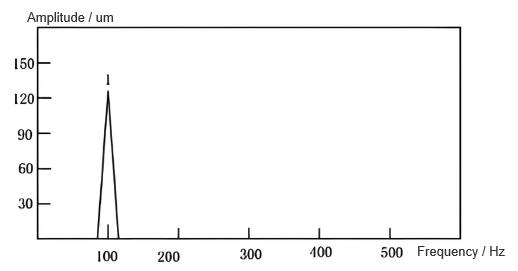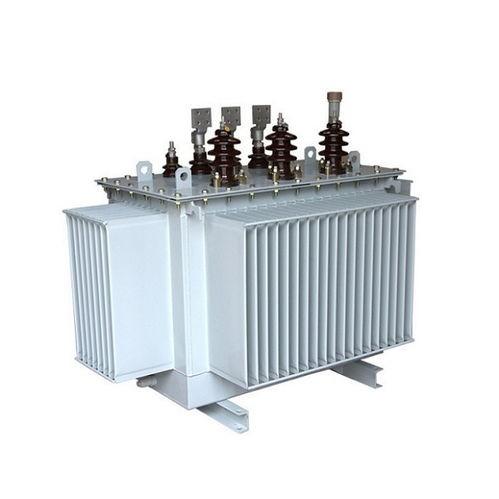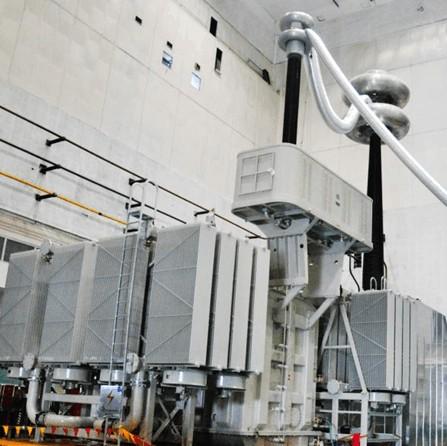1 Ingantaccen Muhimmanci da Kammalawa Farkon Iyaɗa na Makarantar Jirgin Dabbobi
1.1 Tattalin Arziki na Makaranta
Muhimman abubuwa na iyaɗa (takardun takam, zafi, energy) na makarantar jirgin dabbobi suna a nufin cikin tarihin amfani. Don bayyana iyaɗa, yana baka wa maimaita hanyoyin iyaɗa na electric field a gaba ƙungiyoyi. Yawan inganci inganta hanyoyin iyaɗa na electric field a kan fadada rayuwar/kasance mai tsabta, da kuma hanyoyin iyaɗa na insulation na gaba ƙungiya a kan fadada rayuwar. Tattalin arziki ya kamata ya ci gaba da abubuwan iyaɗa, kasa, da kuma ƙarin zamani. Saboda hadin kasa a ƙaramin kusu, yana bukatar samun sensors a kan gaban kusu. Zabe wajen kusa zuwa rectangular units, zaɓe geometric centers masu systematic numbering, ta haka zai iya tabbatar da muhimmanci na spacing ≤ 50 cm, inda ake lura inganci da kafin rarrabe gwamnati. An buƙaci shugaban scheme don ya ƙara da karfin sahihiyar ƙarfafa, siffar ƙungiya, da kuma dalilai na kasa, ta haka zai iya ba da data traceability da kuma ƙaraƙi.
1.2 Tushen Bayanai na Signal na Iyaɗa
Ingantaccen iyaɗa na makarantar jirgin dabbobi ke ɗaukan bayanai na iyaɗa a kan sensing system. Ake yi wasu yanayi a kan 75% rated load da kuma mechanical - constraint removal. Iyaɗa na ƙarfafa ke yake da biyu masu ƙungiya: iron - core magnetostrictive effect wanda ke ƙara da lateral/longitudinal periodic deformation; alternating electromagnetic force wanda ke ƙara da 95 Hz characteristic vibration a kan iron - core - gap interface. Sensitivity na iyaɗa ce ta electromagnetic - mechanical coupling. Idan iron core ko winding ke ɗaya, zai faru abnormal amplitude spectra (95 Hz/150 Hz), time - domain waveforms, da kuma principal - component coefficients. Bincika multi - dimensional feature system na amplitude, skewness, da kuma kurtosis. Tashar aiki ce low - frequency components na kadan 1 kHz, a tashar model na iyaɗa ta hanyoyin iyaɗa ta zaman ta haka don kammalawa farko.
Zabubbukan discrete power spectrum ta haka ke nuna signal power spectrum, kamar Formula (1).

A cikin formula: N ce number of measurement sampling points; f ce sampling rate; o(k) ce sum of the squares of the amplitudes of all frequency components between - 80 Hz and 100 Hz. Saboda tsawon ƙungiyar makarantar jirgin dabbobi, ana iya faru multiple nonlinear factors kamar reflection da refraction. Amplitude na har yanzu harmonic component ke yake da wahala a kan ƙarin yanayi.
1.3 Kammalawa Farkon Makarantar Jirgin Dabbobi na 750 kV
Idan an yi amfani da reactive power compensation device na ƙarfafa, amfani na makarantar jirgin dabbobi na ƙarfafa ke na musamman da ƙarin hankali ga kasa. Wadannan reactors na ƙarin hankali suka da tsaro mai ƙarin da kuma ƙarin hankali, da kuma farkon suka iya ƙara da over - current/over - voltage risks. Idan an yi misal da 750 kV devices. Large - capacity turn - to - turn fault a control winding ke ƙara da turn - number imbalance. Harmonic components, saboda DC da even - order ones, suka ƙara da superimposed odd - order harmonics. Kuma, saboda induced electromotive forces a left da right core columns na faulty control winding ke ƙare, an ƙara unbalanced induced electromotive force Δe a faulty - phase control winding, kamar Formula (2).

A cikin formula: w ce short - circuit turn ratio na reactor; χ ce rated voltage na control winding. Amplitude, component coefficient, mean square deviation a vibration signal, da kuma unbalanced induced electromotive force Δe a Formula (2) sun ƙara internal fault characteristics na reactor. Kammalawa farko ta nuna a Formula (3).

Tashar aiki sun nuna cewa ingancin iyaɗa da mechanical state na reactor ke ƙarin da voltage, wanda ya iya ƙara da interference na power grid. Idan 750 kV reactor ke amfani da ƙarin hankali, yana ƙara balanced even - order harmonics through its three - phase structure. Single - phase fault zai ƙara da harmonic balance, da kuma saboda low - resistance characteristic na control winding, yana ƙara da current five times the rated over - current. Current na wannan abin da suka ƙara da surge to five times the normal level, da kuma harmonic distortion, wanda yake ƙara da kasa na power grid.
2 Test Verification and Result Evaluation
2.1 Tattalin Arziki na Test Platform
An ƙara environment na simulation based on a two - dimensional axisymmetric electric field model, with numerical methods used to study electric field characteristics. Test system transforms reactor wires and insulation components into a 3D solid model. Via the graphical interface, it enables parameterized setting of conductor surface charge, identification of wire floating potential, and dynamic electric field visualization.
Don analysis na longitudinal insulation, an ƙara four mixed waveform modes: full - wave/chopped - wave excitation at the winding head end, full - wave loading at the line end, and chopped - wave loading at the neutral point, simulating coil potential gradient distribution under different working conditions. In main insulation evaluation, an electro - mechanical coupling model is built for electric field concentration areas, realizing vibration characteristic calculation and fault feature extraction. The test - used model has a rated voltage of 45 kV, rated current of 630 A, and rated reactance of 1005 Ω.
2.2 Tasirin Test da Kammalawa
Fault tests on this paper’s method and two other methods were conducted. The test results of the three methods are compared, as shown in Table 1.

As can be seen from the data in Table 2, compared with Method 1 (maximum error of 56 μm) and Method 2 (maximum error of 77 μm), the maximum error of the 750 kV high - voltage shunt reactor vibration testing method designed in this paper is only 3 μm. In Test 6, its detected value of 30 μm is completely consistent with the set value. The maximum error of the method in this paper is reduced by more than 50 μm compared with traditional methods, and the detected value is closest to the actual value, verifying the effectiveness of the method.
The test carried out spectrum analysis on the No. 3 measuring point, and then analyzed the cause of the fault. The tested spectrum diagram of the No. 3 measuring point of the reactor is shown in Figure 1.

When the main magnetic circuit passes through iron cakes and air gaps, a Maxwell force field forms, with intensity twice the current, reducing magnetic field energy. Spectrum analysis shows each measuring point’s vibration frequency is ~100 Hz, and the spectrum aligns with time - domain vibration values, indicating vibration stems from the magnetostrictive effect of the main magnetic circuit insulator.
This study uses fault diagnosis accuracy as the core indicator, comparing traditional Method 1, Method 2, and this paper’s algorithm. Based on a 1000 - case test set: all three methods have benchmark accuracies >97%. This paper’s vibration testing and fault analysis method performs outstandingly, with accuracy stably >99.5% and a 99.8% peak in full - sample tests. Method 1’s accuracy peak/valley is 98.88%/98.50%, and Method 2’s accuracy range is 97.50% - 97.83%. Compared to the optimal Method 1, this method improves accuracy by 0.92 percentage points, approaching the 100.00% theoretical limit, verifying the accuracy advantage for 750 kV shunt reactor vibration testing and fault analysis.
To evaluate performance, an experiment uses fault recognition accuracy as the core indicator. Tests show detection accuracy stabilizes at 99.50% - 99.80%, confirming dual - function effectiveness: accurately measuring 750 kV reactor vibration characteristics and reliably diagnosing faults.
3 Taushe
Research shows that when the iron core of a high - voltage shunt reactor is loose, the time - frequency characteristics of the vibration signal change regularly. Analyzing parameters such as amplitude fluctuation, variance, and the energy proportion of 200 Hz can evaluate the state. Characteristic frequency bands like 200 Hz, 300 Hz, and 500 Hz are related to working conditions. The diagnosis model has good fault identification ability. Vibration online monitoring can identify iron core loosening and winding deformation, and the tests verify the effectiveness of the method.


























